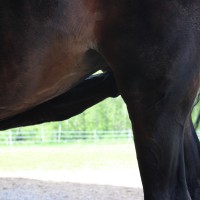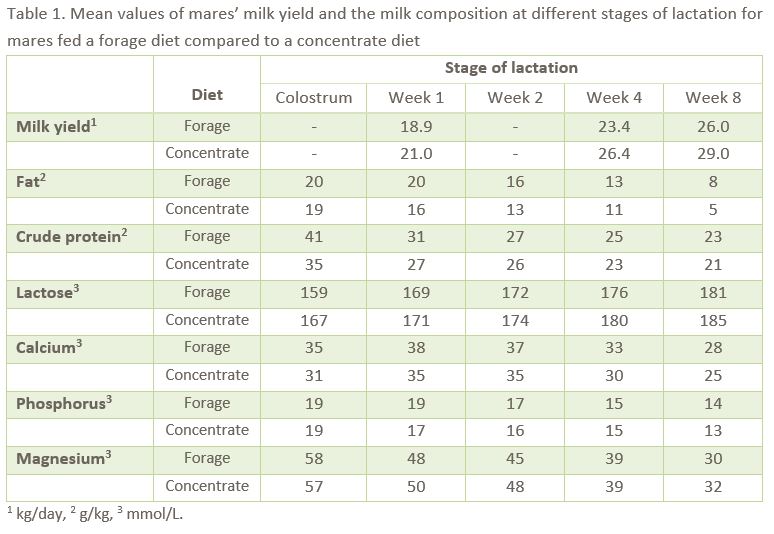The diet’s impact on mares’ milk

This study investigated the effects on mares’ milk composition when mares were fed a forage diet compared to a concentrate diet. The forage diet consisted of 95% forage and 5% concentrate (soybean meal, beet molasses, mineral premix) and the concentrate diet consisted of 50% forage and 50% concentrate (barley, soybean meal, beet molasses, mineral premix). Ten mares, French draft breeds Breton and Comtois, in their first two month of lactation were divided into two groups; 5 mares were offered the forage diet and 5 the concentrate diet. In both groups the mares had free access to the forage and for the group on the concentrate diet the amount concentrate was adjusted so the diet always had a 50:50 ratio of forage:concentrate. The energy and protein requirements were met on both diets.
The mares that were fed the forage diet ate on average 1.7 kg dry matter more per day than the mares fed the concentrate diet and the individual variation in feed intake was less between the mares on the forage diet. The average energy intake was higher for the mares fed the concentrate diet and they also had the higher mean milk yield (Table 1). However, the mare that produced the largest amount of milk was in the group fed the forage diet, she produced up to 39 kg/day in week 8 but then the fat concentration in her milk was very low.
The milk concentrations of fat, crude protein, calcium and phosphorus were higher for the mares fed the forage diet than for the mares fed the concentrate diet (Table 1). The milk lactose concentration was higher for the mares fed the concentrate diet and the concentration of magnesium did not differ significantly between the diets (Table 1).
There was also an effect of diet on the milk fatty acid composition; higher concentrations of linolenic acid [18:3(n-3)] and lower concentrations of linoleic acid [18:2(n-6)] for the mares that were fed the forage diet than the mares fed the concentrate diet (Table 2). This difference in milk fatty acid composition reflects the fatty acid composition of the diets; forage contains more linolenic acid and concentrate contains more linoleic acid.
In summary, the mares fed the concentrate diet produced larger amounts of milk per day but the mares fed the forage diet produced more concentrated milk. The effects that the diets had on the mares’ milk implied no difference in the foals’ daily weight gain. It is important to remember that lactating mares needs forage of high quality – high energy and protein content!
Sara Muhonen, AgrD


